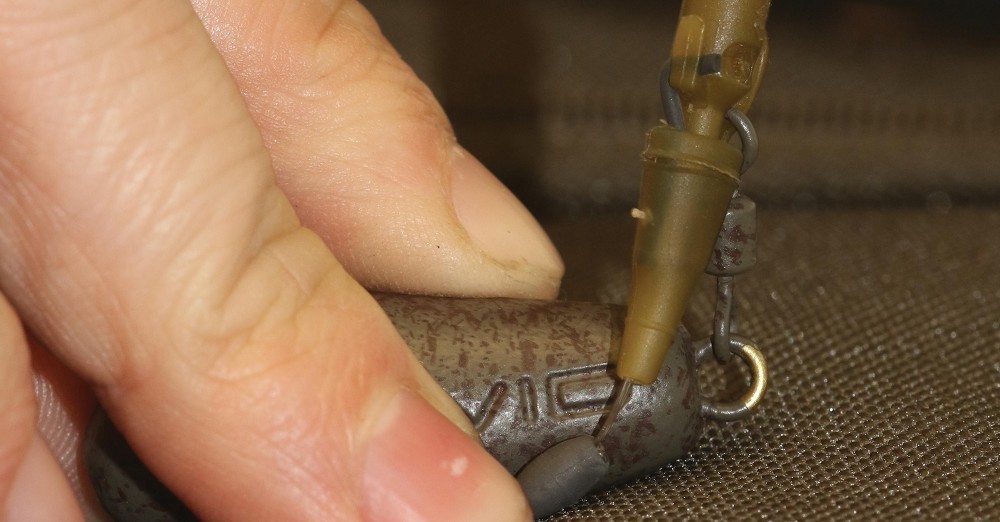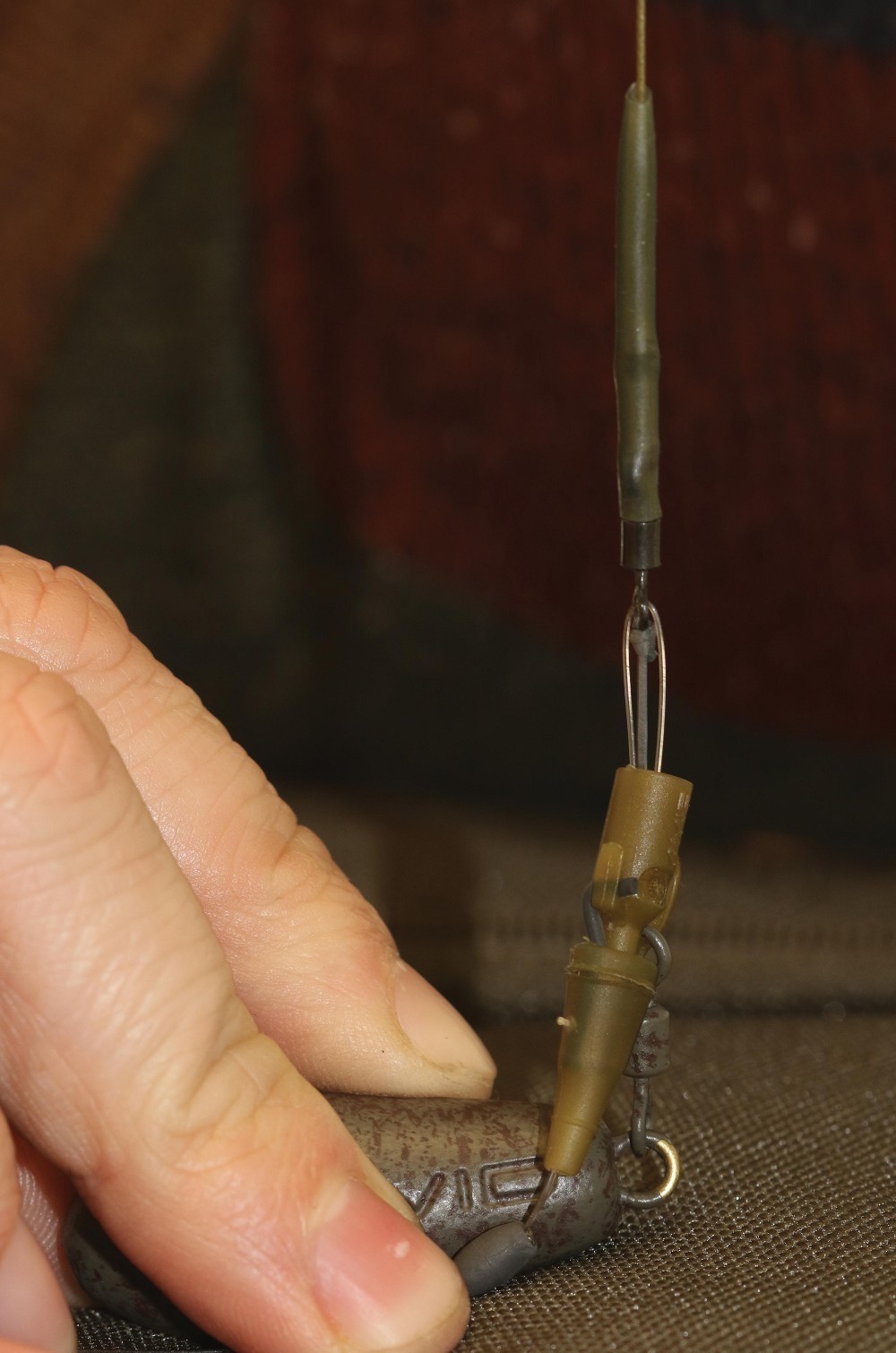
The lead clip arrangement that pulls back!
You've pulled!
Secrets are exactly that. Well, they were. You see, this new series is all about secrets. The type of thing that once discovered, you endeavour to keep to yourself for as long as possible. It might be the smallest thing in the world, but sometimes those edges are all it takes to transform a season.
I’m not professing to be the originator of anything you see in this series. Far from it! I’m merely lifting the lid on a box of tricks that is the accumulation of fishing hundreds of venues with hundreds of different anglers. They’re the result of listening, watching and learning. Oh, and catching a few, too!
 Add in an edge: Using Power Gum or pole elastic in your set-up can be a real edge; A nice colour: Size 10 Preston Innovations Slip Elastic is a nice black colour; The perfect clip: Using an Avid Zig Clip gives you the perfect place to place the tag end of the elastic.
Add in an edge: Using Power Gum or pole elastic in your set-up can be a real edge; A nice colour: Size 10 Preston Innovations Slip Elastic is a nice black colour; The perfect clip: Using an Avid Zig Clip gives you the perfect place to place the tag end of the elastic.This month's secret...
For my opening gambit, I’m going to look at an elasticated lead set-up that when assembled correctly appears to be the difference between getting a bite or not on some tricky venues.
There are a few of these sorts of ideas kicking around; The Recoil Rig, The Hermit Rig, The Hopper Rig. I’ll cover some of these in future issues, but for now it’s the elasticated lead clip I’m going to look at.
I can remember sitting on Richmond Lake up in Lincolnshire once upon a time and two guys were absolutely slaying the fish on singles chucked to the middle. At the time that was all I did and I’d say I was fairly good at it, but despite this, I couldn’t get a bite. I casually went for a walk around and just happened to appear in their swim just as they were netting another fish. I saw all I needed to know exactly what they were doing that I wasn’t. The lead was still on the lead clip, only the lead clip was still bouncing around on the line in a running fashion. Inside the lead clip was a swivel a size too small that had a short length of pole elastic tied to it. I knew exactly why.
A few years before, I was shown an in-line set-up that was basically the same thing. It was popularised by Steve Renyard (remember him?) and could be achieved by trapping the elastic between the lead and tail rubber and tying it to a running swivel. When you pick the rig up, the elastic pulls back and drives the hook home quicker than if the elastic weren’t there. It’s still 100% safe and really easy to put together.
Following my discovery at Richmond, I used elasticated set-ups to great effect there and further afield.
In more recent history, on some of the RH Fisheries venues the guys really struggle through the colder months if they’re not using this arrangement. It’s funny watching the better anglers in a blind panic trying to hide their set-up when they’ve got a fish in the net. I photographed a carp for a guy at Acton Bottom Lake this year and he was so flustered trying to hide his secret. Once I told him I had no intention of copying him or fishing the lake he calmed down a bit, but it was still interesting to see how secretive he and others have been about this particular set-up.
 Both elastic and Power Gum can be used to elasticate a lead set-up. Neither are strong enough to play a fish on, though, so connecting them takes some thought
Both elastic and Power Gum can be used to elasticate a lead set-up. Neither are strong enough to play a fish on, though, so connecting them takes some thought Tie a size 10 swivel to your main line with a Figure-Of-Eight-Loop Knot. It’s important the knot is out of the way, behind the lead clip
Tie a size 10 swivel to your main line with a Figure-Of-Eight-Loop Knot. It’s important the knot is out of the way, behind the lead clip Tie your elastic or Power Gum to the same swivel with a Three-Turn Grinner Knot; most other knots will slip
Tie your elastic or Power Gum to the same swivel with a Three-Turn Grinner Knot; most other knots will slip Thread the elastic through the centre of an Avid Zig Clip, or your chosen lead clip. It should easily pass through
Thread the elastic through the centre of an Avid Zig Clip, or your chosen lead clip. It should easily pass through Pass the elastic out the rear of the lead clip and use the tail rubber to trap it in place. You can adjust the tension this way
Pass the elastic out the rear of the lead clip and use the tail rubber to trap it in place. You can adjust the tension this way Put the tag end of the elastic under the clip on the side of the Zig Clip for neatness and trim with scissors
Put the tag end of the elastic under the clip on the side of the Zig Clip for neatness and trim with scissors This excess means you can thread the lead clip again after a bite really easily without re-tying the elastic
This excess means you can thread the lead clip again after a bite really easily without re-tying the elastic With a nice big lead held captive, the elastic can work its magic. It’s the lead that literally pulls back!
With a nice big lead held captive, the elastic can work its magic. It’s the lead that literally pulls back!How I set it up
I tie with Power Gum now rather than pole elastic, purely because the colour is a bit nicer and the tension that can be achieved in such a short length is more like what I’ve found most productive.
I use a size 10 swivel inside an Avid Zig Clip, and I use the tag on the back of the Zig Clip to hold the Power Gum neatly out of the way. This makes it a lot easier to re-thread the Power Gum after a fish, as it can be longer than you need it in the first place.
As I mentioned earlier, there are a few set-ups that pull back and this idea of trapping elastic or power gum under the tail rubber extends itself to use with an in-line lead. On an Avid Carp Bag Lead it’s a superb little set-up and one a few friends of mine have been enjoying some great winter success on.
How often do I use it? Well, that would be telling, wouldn’t it? It’s supposed to be a secret you know!
 A rare mirror tricked by thinking outside the box after getting mugged off by showing fish for a few hours. Small changes can switch a session into life
A rare mirror tricked by thinking outside the box after getting mugged off by showing fish for a few hours. Small changes can switch a session into life



